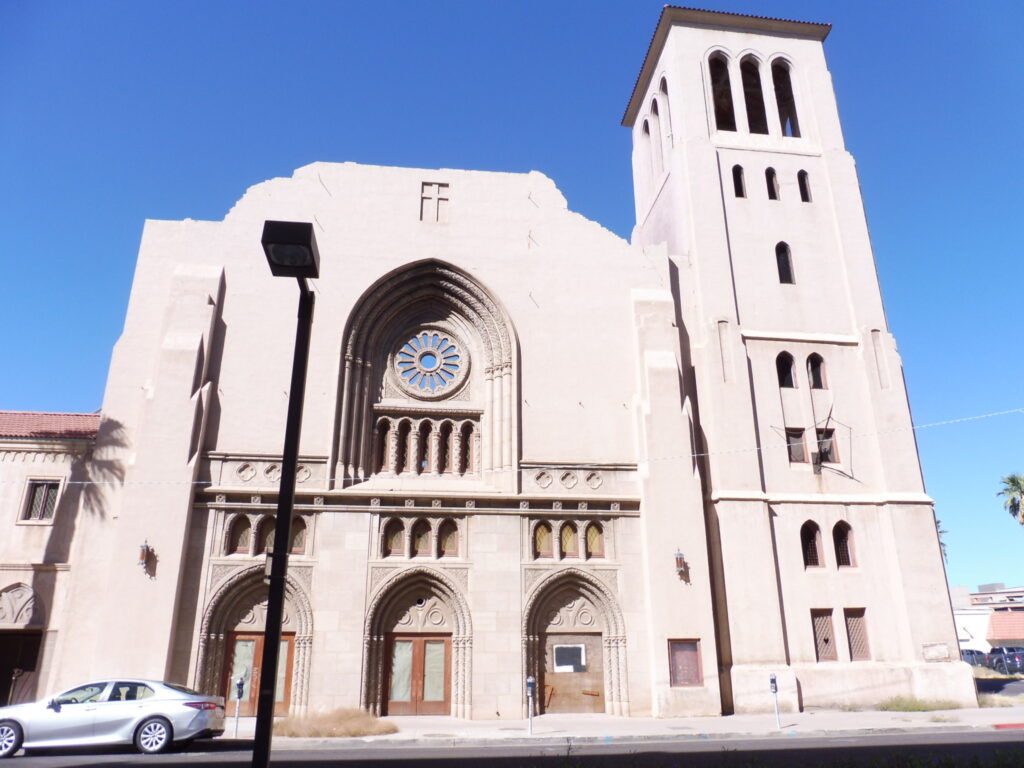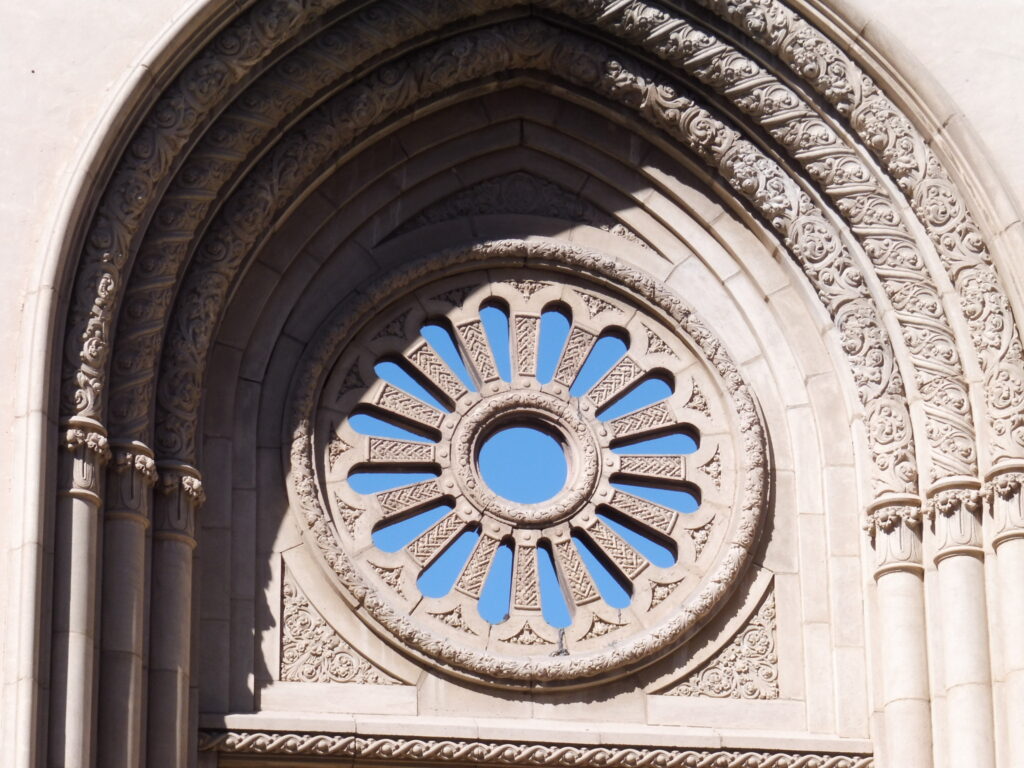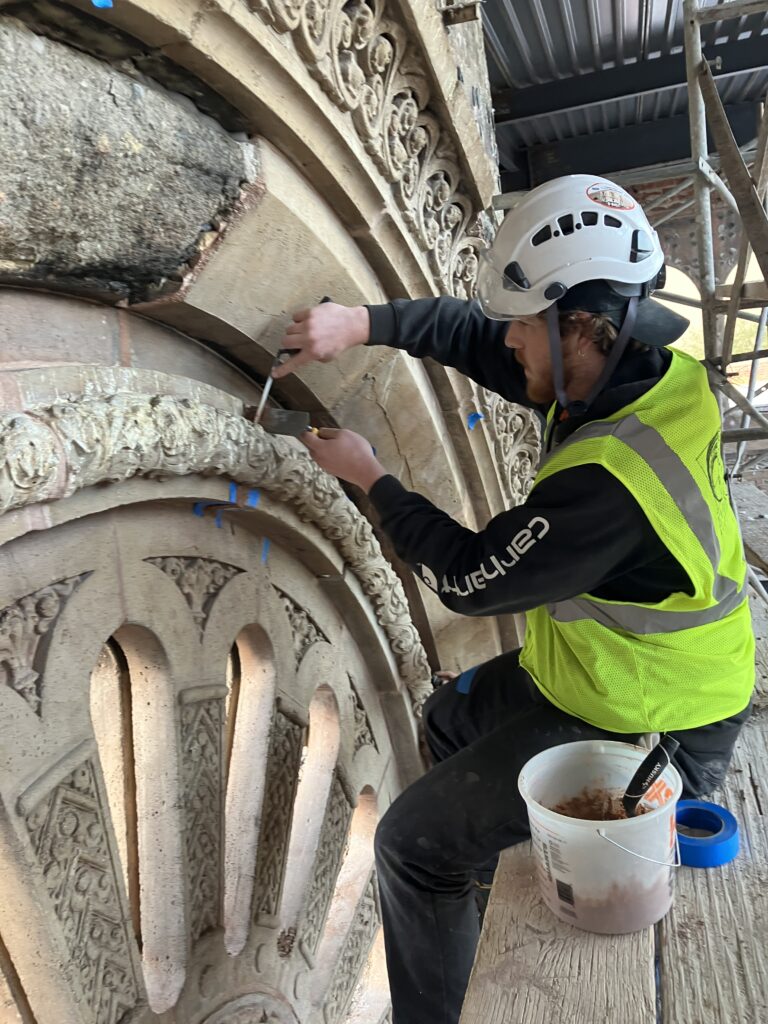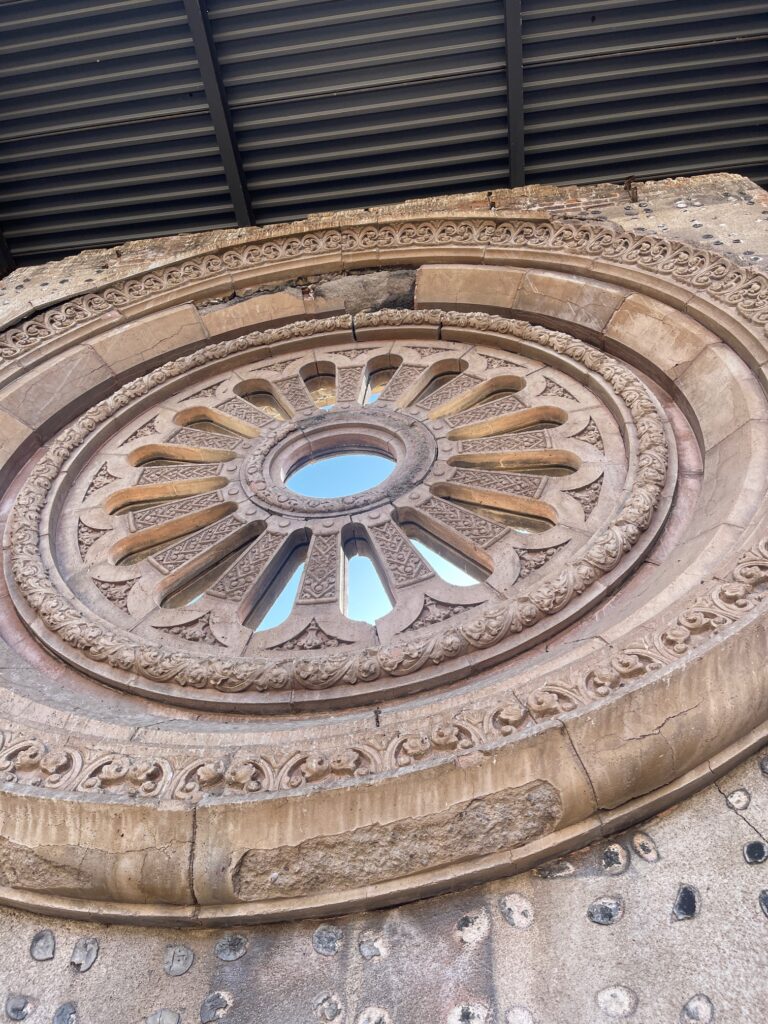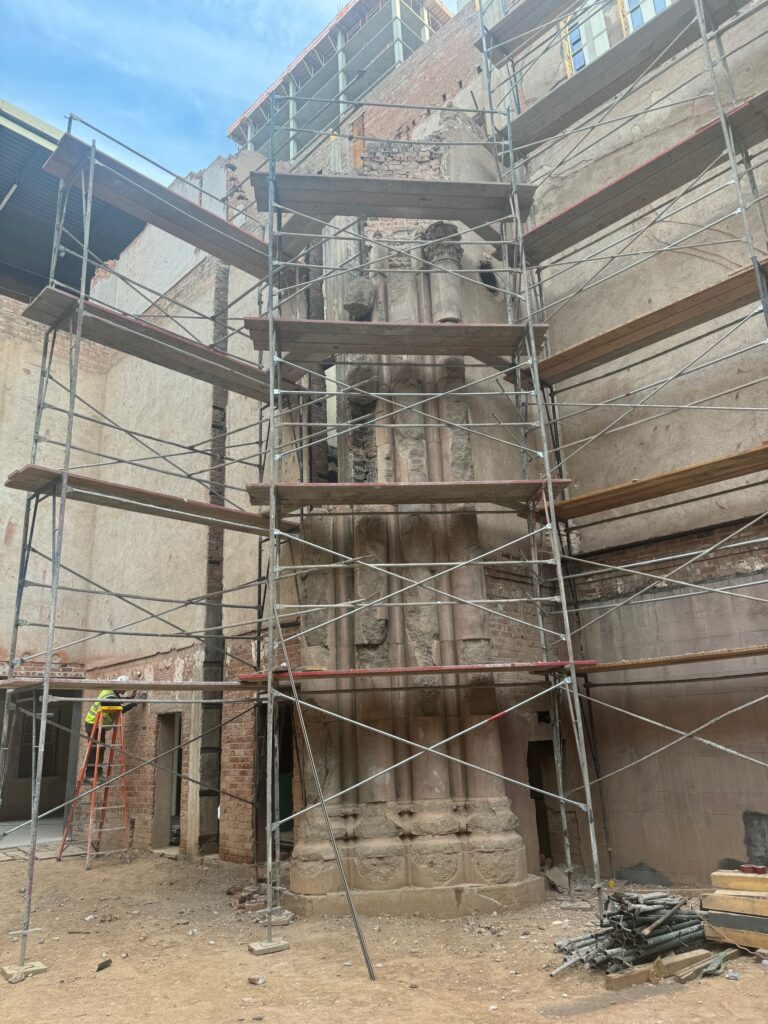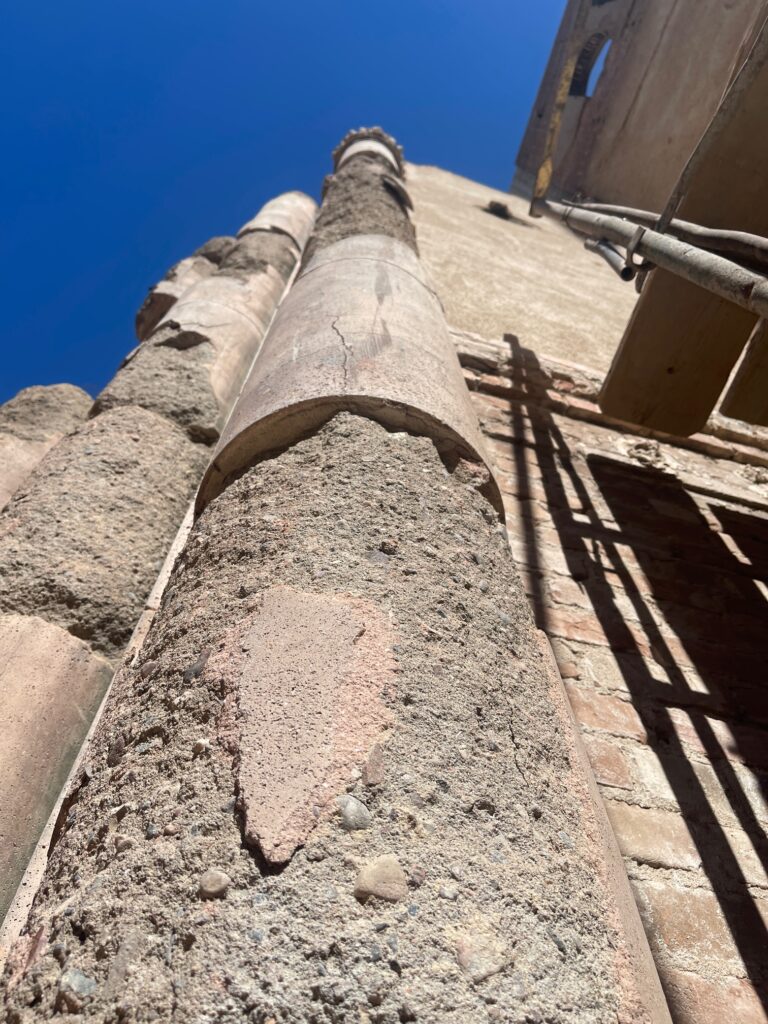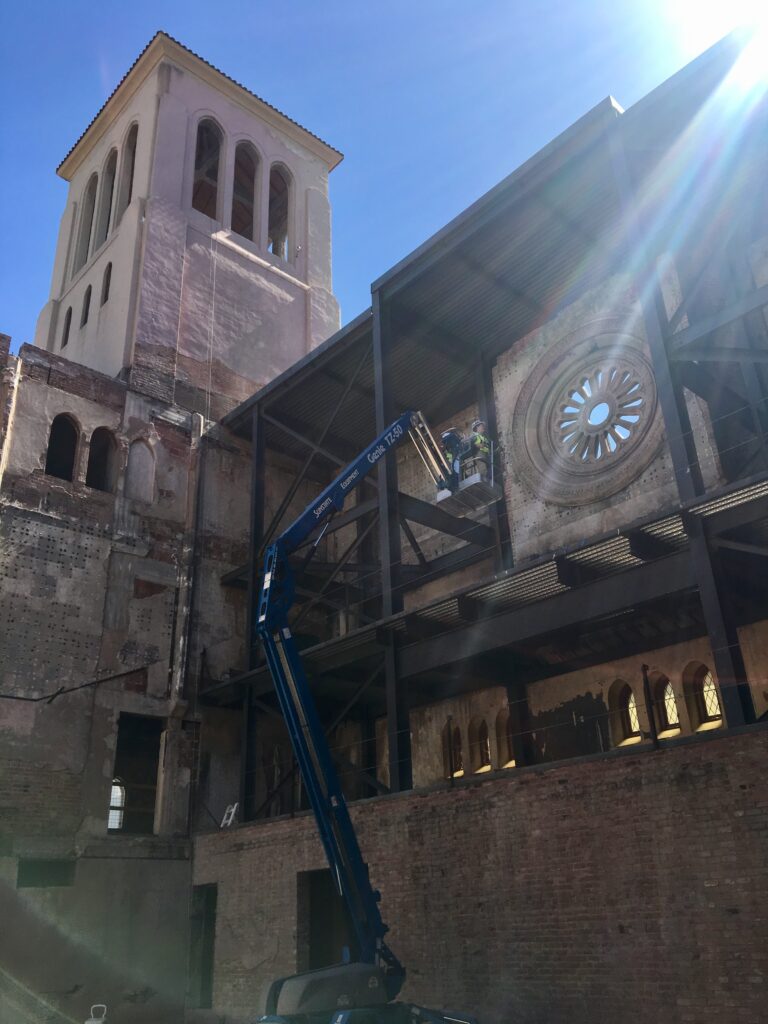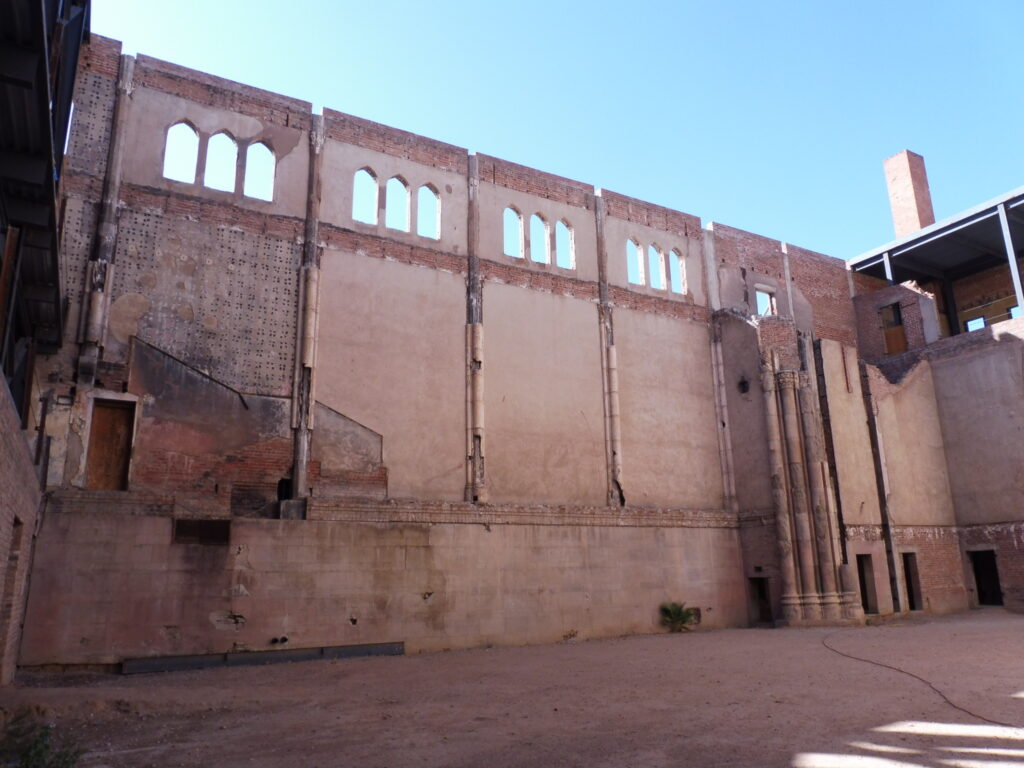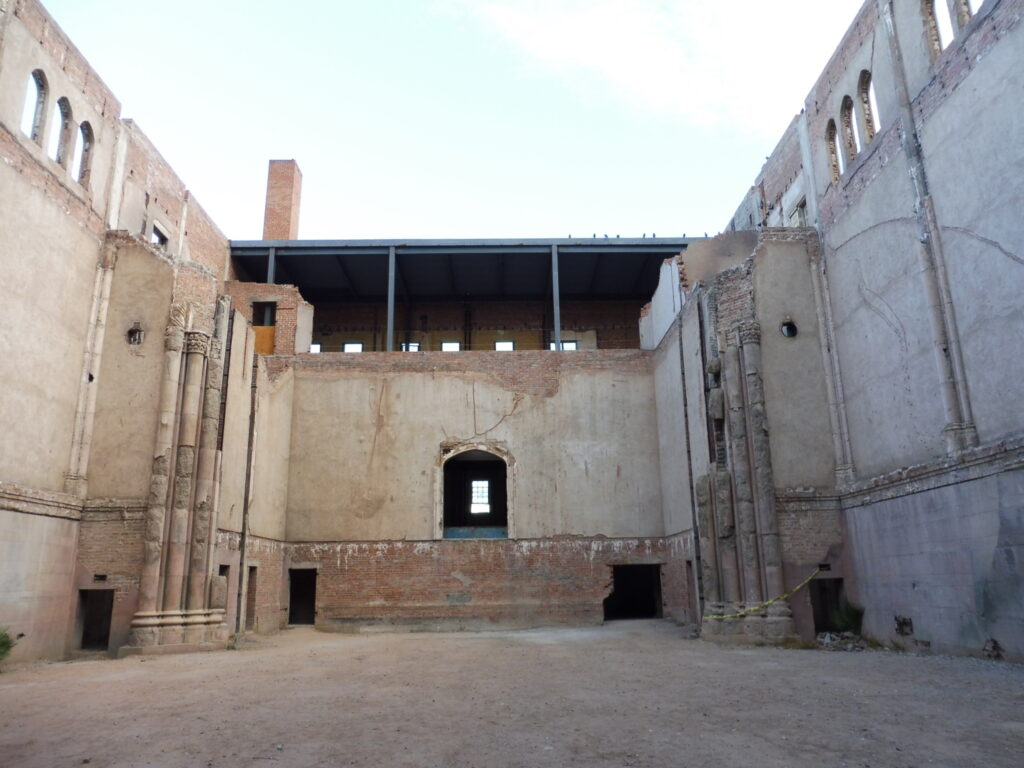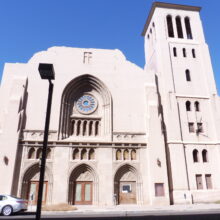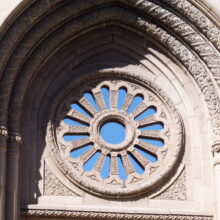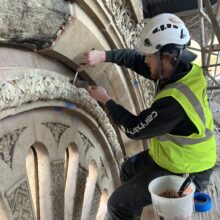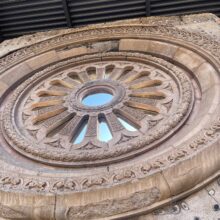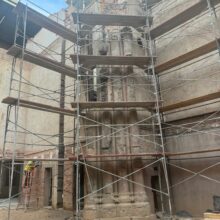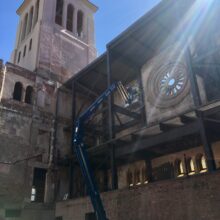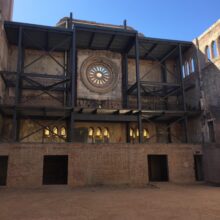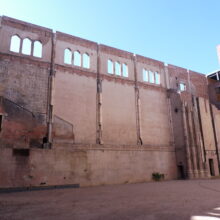Monroe Street Abbey
The ruined structure known as the Monroe Street Abbey, located in Phoenix, was constructed in 1929 as the First Baptist Church.In January 1984, a fire was set inside the church, which spread out of control and destroyed wood structural members including floor joists and roof trusses, as well as interior woodwork and plaster ceilings. Masonry walls and concrete floors survived, leaving the historic church building a roofless ruin. Nevertheless, community groups and the City of Phoenix stepped in to save the church from demolition, installing structural reinforcement and protective covers.
In 2017, EverGreene conducted a condition assessment and treatment testing on the ruins. The purpose of the project was to evaluate the condition of historic fabric, identify deterioration as well as ongoing threats to its long-term preservation, and to test possible remedial and preventive conservation treatments. The condition assessment identified a range of conditions affecting historic architectural materials including brick and cast stone masonry, as well as stucco and specialty plasters. The assessment included a survey to record approximate quantities of deterioration through graphic documentation. EverGreene coordinated materials analysis by an independent laboratory to evaluate the strength and durability of plaster and masonry damaged by fire and exposed to weathering for over 30 years. Conservation treatment testing included restoration mortars and grouts, in addition to consolidants, sealers, coatings, and adhesives employed to stabilize fragile materials in a ruined state.
We returned in 2023 to preserve some of the building’s most architecturally significant features. The site owners embarked on an ambitious campaign to reimagine this historic ruin as a commercial event venue. This creative adaptive reuse sought to preserve the existing structure, while reintegrating it into the community under a new identity. The prominent street facing rose window and the iconic proscenium columns were the subject of this selective intervention. Our team stabilized large cast stone segments with mechanical connections and preservation treatments. Segments of stone were reconnected to the building’s masonry mass through the introduction of epoxy embedded rods. Specialized epoxy and preservation grout was injected into fissures to arrest the delamination occurring at these exposed components. A stabilizing emulsion was introduced to the most porous and vulnerable surfaces to reduce material loss. Stabilization efforts were designed to have minimal visible impact and preserve the new interpretation of the historic structure. This successfully preserved facility remains an integral architectural asset to downtown Phoenix’s rich heritage.

